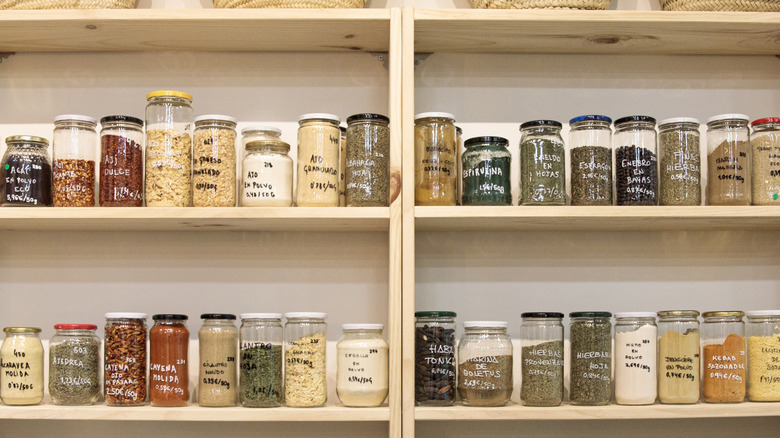The Genius Way To Organize Your Kitchen Pantry Like Ina Garten
If your kitchen pantry feels like a cluttered labyrinth where finding one ingredient takes 10 minutes, you're not alone. Hidden behind closed doors, pantries are easy to ignore — until you're in the middle of cooking and can't find the paprika. The good news is that organizing doesn't have to be an all-day, stressful project. With a few smart strategies — and inspiration from Ina Garten, the queen of kitchen organization tips – you can turn your pantry into a space that's both functional and beautiful.
The chef likes keeping her pantry organized the way a grocery store does: labels facing forward, everything lined up in neat rows (per The Kitchn). Not only will it look nicer, but it's easier to see what you have, quickly grab what you need, and notice gaps that need restocking. And, much like a grocery store, items should be grouped together in categories, rather than tossed randomly. This means baking goods like flour and sugar in one spot, spices together, and grains like rice and pasta in another. For duplicates, she stacks them when possible (a helpful way to organize canned goods in the pantry) to save space and make inventory checks a breeze.
Other kitchen pantry organizations hacks
While flipping cans of beans so the labels face forward is a good start, it's only the tip of the iceberg. For a truly tidy pantry, it helps to start from scratch. Take everything out, wipe down the shelves, and take stock of what you have, tossing anything stale, expired, or suspiciously half-empty from years ago. Then, organize by category à la Ina Garten. Once you're ready to restock the shelves, think strategically about placement. Heavier items like big bags of flour and rice belong on the bottom, while frequently used items should sit at eye-level for easy access. On top, store rarely used ingredients, as well as anything that needs to be out of reach from kids or pets, like alcohol, vitamins, or dog-toxic chocolate.
Another helpful tip is to use clear containers for bags and loose ingredients. While your pantry may lose that grocery-store look, bins make stacking easier and keep small items corralled. Labels help too, especially for ingredients that look alike (you definitely don't want to mix up your salt and sugar). Newspaper templates are also helpful for organization, as you can plan out what will fit in each container before buying them.


